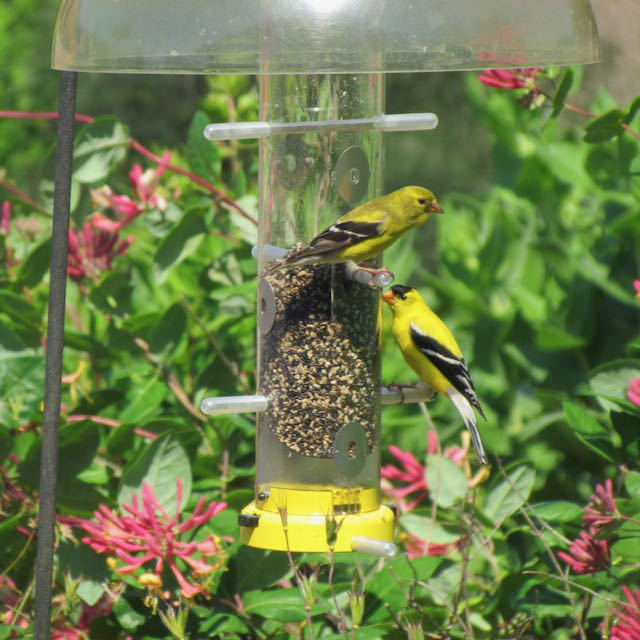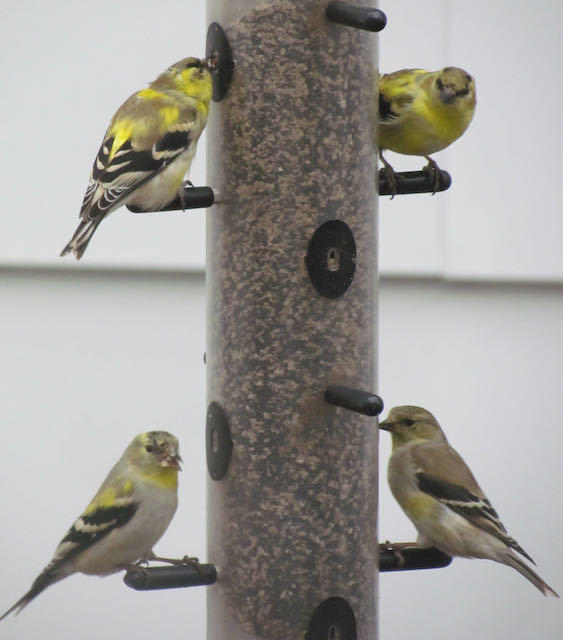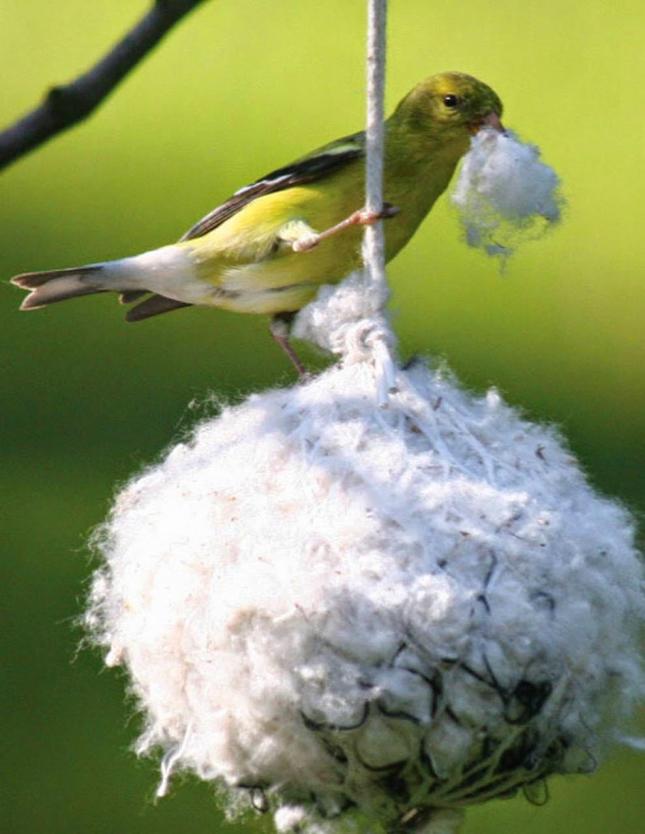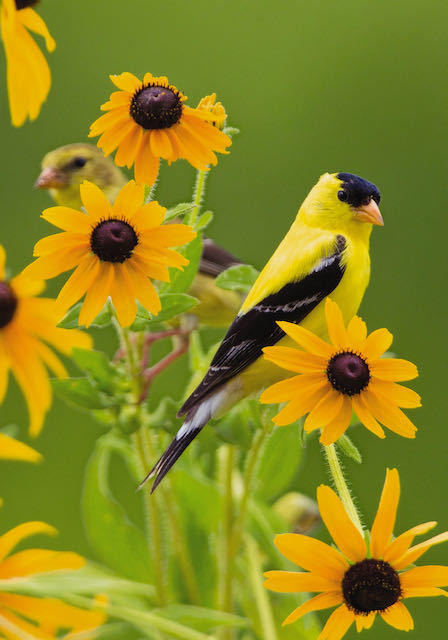ATTRACTING GOLDFINCHES
Tips for Feeding Finches:
Goldfinches, house finches, chickadees and indigo buntings (spring-summer) are a few of the birds which will visit finch feeders. Goldfinches are in our area year round, but lose their yellow plumage in the winter months (see bottom image). Goldfinches can be a bit fickle at the feeders, so here are our tips for making them happy:
· WBU Finch Mix (a combo of Nyjer & fine sunflower chips) is preferred by most Goldfinches over Nyjer (incorrectly nicknamed “thistle”) alone. Note that this “thistle” is not the same as our native thistle and will not sprout into a pest plant.  · Goldfinches are picky eaters so it is important to keep the seed fresh and dry. Shake the feeder every few days to check for clumps. A weather dome can keep rain and snow at bay. Uneaten seed should not stay in a feeder for more than two weeks. Transfer uneaten seed (as long as it is not moldy) to another feeder for less fussy birds. Purchase only as much seed as can be used in six-eight weeks, and store in an airtight container. As with all seed, avoid storage in a warm garage in summer to prevent rapid loss of freshness. (WBU gets a fresh shipment of finch food every week, so when you buy from us, you know you aren't purchasing seed that has been sitting in a warehouse getting stale.)
· Goldfinches are picky eaters so it is important to keep the seed fresh and dry. Shake the feeder every few days to check for clumps. A weather dome can keep rain and snow at bay. Uneaten seed should not stay in a feeder for more than two weeks. Transfer uneaten seed (as long as it is not moldy) to another feeder for less fussy birds. Purchase only as much seed as can be used in six-eight weeks, and store in an airtight container. As with all seed, avoid storage in a warm garage in summer to prevent rapid loss of freshness. (WBU gets a fresh shipment of finch food every week, so when you buy from us, you know you aren't purchasing seed that has been sitting in a warehouse getting stale.)
· Feeders should be washed monthly, or more often if they get wet inside.
· It may take 2-4 weeks or longer for birds to find a new feeder. Initially, filling the feeder only halfway can prevent waste if some seed must be thrown out before the feeder is discovered by the birds.
· As finches can be shy, position their feeders away from other feeders so they aren’t intimidated by all the activity. Unless needed to catch dropped seed, trays are not recommended on finch feeders, otherwise larger birds may dominate the feeders.
- Finches prefer feeders with wide visibility around them, so feeders placed on am Advanced Pole System or on shepherds hooks out in the open on in a flower bed are typically more successful than those tucked into the branches of a tree.
· Finches feed at feeders year round, but people may notice a natural rise and fall in activity based on weather, habitat and natural food supplies. Watch for goldfinches hanging upside down to feed from seeding flowers and plants. During quiet times at the feeder, be sure to change seed regularly so the finches aren’t discourage by stale seed when activity resumes.
· Habitat can make a difference. While finches will visit almost any yard, planning your landscape with them in mind can help. Neighborhoods with more native plantings, especially many wildflowers that go to seed, will get the most attention. Being a native prairie species, goldfinches don't mind being in the open (i.e. even people in new subdivisions with few trees can attract them), but in times of severe weather, they may move to more shelters locations until the weather improves.
· If House Sparrows are a nuisance, ask us for advice.

A Late Start - Goldfinches Nest in July and August
While other songbirds feed their babies insects, American Goldfinches are diehard vegetarians, so they delay their nesting season until mid-summer so that they can feed their babies the soft seeds of ripening wildflowers. They build their nests with fine plant fibers and will readily visit our WBU Nesting Balls to gather material. When they fly off, you can often visually track them to see where they are building their nests.
Hang the nesting ball from a tree or shepherd's hook and tease some fibers out to draw the finches' attention, or even better, take some materials an fluff it loosely in a clean suet basket or similar holder. This makes it even easier for the finches to use. Shop online for nesting supplies.

Nesting Material Ball
Population Peaks in Autumn
After the babies fledge in late summer and increase the population, combined with the arrival of birds who spent the summer farther north, central Illinois typically sees a huge uptick in finch feeder activity in autumn, so you may wish to add additional finch feeders to your yard to accommodate all the birds.


